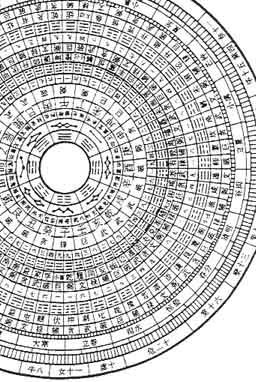An Introduction to Living in the Chinese Cosmos

The San Yuan Luopan, a type of fengshui compass
© Feng Shui Architects Pty Ltd
Fengshui (literally “wind-water”) was a form of geomantic divination based on the workings of the cosmological concepts yinyang and qi. See “The Chinese Cosmos: Basic Concepts” for more about fengshui.
Living in the Chinese Cosmos: Understanding Religion in Late-Imperial China explores the religious beliefs and practices of Qing dynasty China (1644-1911), including:
• popular religion and beliefs concerning the souls of the ancestors, the afterlife, and the pantheon of gods inhabiting the three domains of the Chinese cosmos -- Heaven, Earth, and the Underworld;
• the imperial government’s involvement with religious belief and practice (often described as the “State Cult”) expressed in the civil service examination system that disseminated the Confucian worldview throughout society, the government-mandated temples for Confucius and the city gods, and the imperial ritual apparatus that required the reigning emperor to act out his role as the “Son of Heaven” (Tianzi) in annual rituals and sacrifices;
• the long-established institutional religions often collectively referred to as the sanjiao (literally “three teachings”) -- Daoism, Buddhism, and Confucianism.
The outlines of a basic conception of the cosmos and how it functioned served to link together varieties of belief and practice, though it is important to remember that “the cosmos” as such was not an explicit much less coherent topic of discussion in traditional China; in short, it is impossible to define one authentic and unproblematic “traditional Chinese worldview.” Still, there were some basic principles concerning human existence and the functioning of the universe that at least informed or were in conversation with the varieties of religious practice in traditional China. These concepts included qi, the basic “stuff” of the universe; shen, expressing distinct fields of meaning surrounding the concept of “spirit”; and yinyang, the dichotomy symbolizing the at times conflictual and at times harmonious but always fluctuating forces that animate all cosmic phenomena.
During the late-imperial period, Chinese identity -- that is, the idea of being “Chinese” -- was inextricably linked to the notion of living in this cosmos, which encompassed the world of the living (society and the state) and the world of the dead (the heavens and the underworld). The cosmos also defined the world within which the three teachings -- Confucianism, Daoism, and Buddhism -- operated, though throughout their long histories the teachings also defined and redefined in turn how the “cosmos” itself was conceived. This “cosmic framework” increasingly came under attack toward the end of the imperial period and eventually collapsed altogether in the era of the Communists, but it is interesting to consider its significance today in light of what some have called the “reemergence” of traditional religious practices in contemporary China.